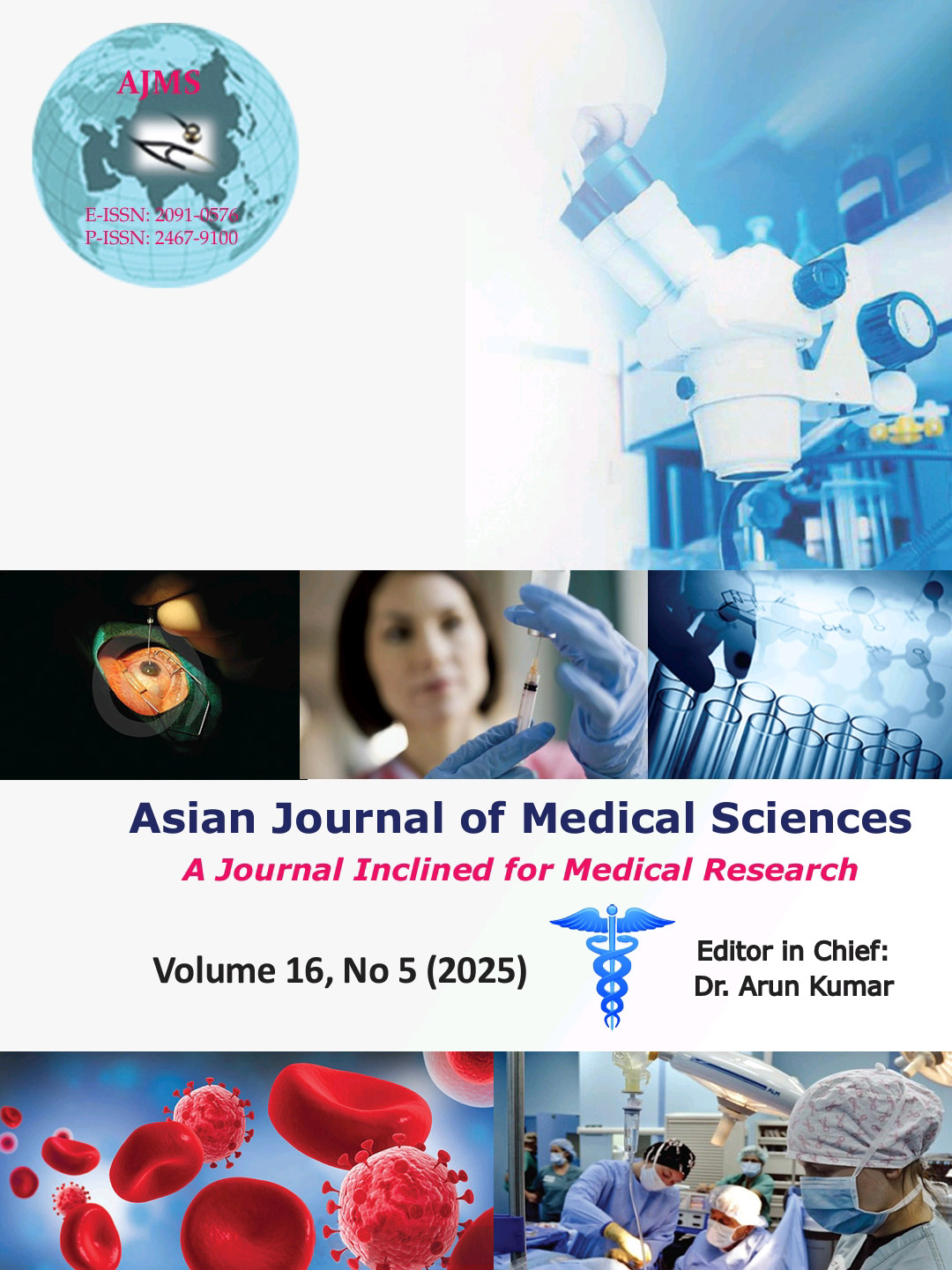A study to correlate trends in perfusion index and bispectral index for assessment of depth of anesthesia: A cross-sectional study
DOI:
https://doi.org/10.71152/ajms.v16i5.4465Keywords:
Anesthesia depth; Bispectral index; Perfusion index; Intraoperative hemodynamics; Heart rate; Blood pressure; Systolic blood pressure; Diastolic blood pressure; General anesthesia; Anesthesia monitoring; Hemodynamic parameters; Portable monitoring toolsAbstract
Background: Accurate anesthesia depth monitoring is crucial for patient safety. Bispectral index (BIS) measures brain activity, whereas perfusion index (PI) reflects peripheral blood flow and sympathetic tone. BIS is a gold standard but is limited by cost and interference, whereas PI is a simpler, more accessible alternative.
Aims and Objectives: This study aimed to correlate trends in PI and BIS for assessing anesthesia depth. The primary objective was to examine the correlation between PI and BIS trends. The secondary objective was to monitor intraoperative hemodynamic fluctuations and their relationship with PI and BIS.
Materials and Methods: A cross-sectional study was conducted over 12 months at M.G.M. Medical College and M.Y. Hospital, Indore. Seventy patients (18–65 years, the American Society of Anesthesiologists physical status 1 or 2) undergoing elective surgery under general anesthesia were enrolled in the study. Exclusion criteria included cardiovascular, neurological, psychiatric disorders, and peripheral vascular diseases. BIS and PI were monitored throughout the perioperative period. Statistical analysis was done using IBM SPSS Version 22, with significance set at P<0.05.
Results: A strong negative correlation between BIS and PI (P<0.05) was found. BIS also showed negative correlations with heart rate, systolic, and diastolic blood pressure (P<0.05). PI had a significant positive correlation with heart rate (P<0.05) and a negative correlation with blood pressure (P<0.05).
Conclusion: The significant negative correlation between BIS and PI supports PI as a potential alternative for anesthesia depth monitoring, especially in resource-limited settings.
Downloads
Downloads
Published
How to Cite
Issue
Section
License
Copyright (c) 2025 Asian Journal of Medical Sciences

This work is licensed under a Creative Commons Attribution-NonCommercial-NoDerivatives 4.0 International License.
Authors who publish with this journal agree to the following terms:
- The journal holds copyright and publishes the work under a Creative Commons CC-BY-NC license that permits use, distribution and reprduction in any medium, provided the original work is properly cited and is not used for commercial purposes. The journal should be recognised as the original publisher of this work.
- Authors are able to enter into separate, additional contractual arrangements for the non-exclusive distribution of the journal's published version of the work (e.g., post it to an institutional repository or publish it in a book), with an acknowledgement of its initial publication in this journal.
- Authors are permitted and encouraged to post their work online (e.g., in institutional repositories or on their website) prior to and during the submission process, as it can lead to productive exchanges, as well as earlier and greater citation of published work (See The Effect of Open Access).





